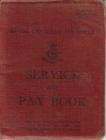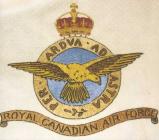1
In the 1930s, the threat of the German Luftwaffe was very real and the British Air Ministry began to seek an effective means of preventing attacks from the air. In February 1935, Sir Robert Watson-Watt, a British scientist experimenting with high frequency radio, demonstrated a system of Radio Direction Finding (called RDF) to the British Air Ministry, an event known as the "Daventry Experiment".RDF later came to be known as "RADAR", which stands for "Radio Detection And Ranging" because it uses radio waves to detect the presence, position and speed of objects at a distance. Radar was a top secret technology which developed rapidly during World War II. It was adapted to aircraft and ships for defensive and strategic purposes. Because of its secrecy, radar technology was placed under the Official Secrets Act and the men and women who worked on radar were not allowed to speak about their work until 50 years had passed.
There was a tremendous need for trained radar specialists and in 1940 Britain turned to Canada to supply men and training. Over 6,000 Canadian men worked on radar in all theatres of war during WWII, and kept their Oath of Secrecy for over 50 years. This is their story.
2
An RCAF Paybook was issued to all servicemen1940 to 1945
 Credits:
Credits:The Secrets of Radar Museum
A.G. James Collection
3
The RCAF Crest embroidered by A.R. Taylor while in a convalescent hospital in EnglandCirca 1942
 Credits:
Credits:Private Collection
Courtesy of A.R. Taylor